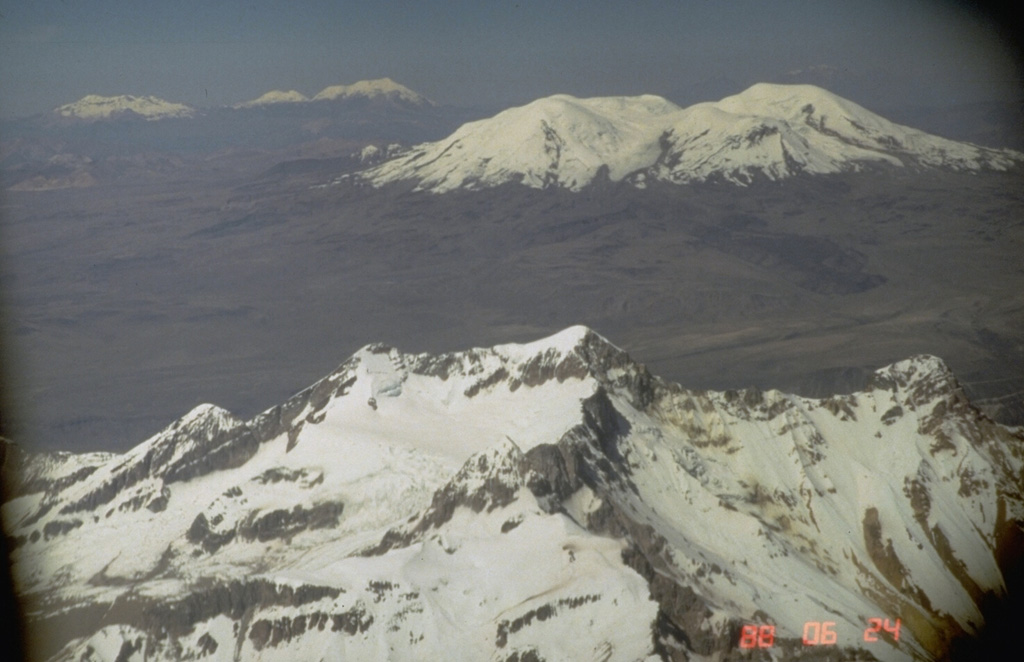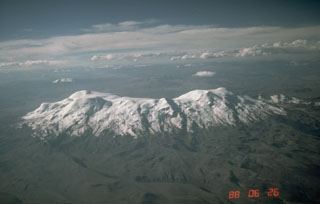Image GVP-04761

Volcanoes of three ages can be seen in this aerial view across northern Perú. The eroded, 6093-m-high Solimana volcano (foreground) has not erupted since the Pleistocene, but has an active fumarole. It is located NW of the younger Coropuna volcano (upper right), which has produced major flank lava flows during the Holocene. The three-peaked Sabancaya volcanic complex (upper left) includes the historically active cone of Sabancaya proper, which is flanked on the left by Hualca Hualca volcano and on the right by Ampato volcano.
Photo by Norm Banks, 1988 (U.S. Geological Survey).
![]() This image is made available as a Public Domain Work, but proper attribution is appreciated.
This image is made available as a Public Domain Work, but proper attribution is appreciated.

Coropuna

Sabancaya

Solimana
